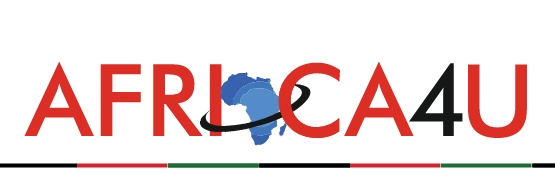(3 Minutes Read)
Ramaphosa, meanwhile, used the opportunity in Washington to stress that while South Africa continues to grapple with its complex history of racial inequality, the narrative of white genocide is not only false but dangerous
South Africans are voicing strong support for President Cyril Ramaphosa following a tense and high-profile meeting with U.S. President Donald Trump, during which Trump repeated unfounded allegations of a so-called “white genocide” in South Africa.
The meeting, held at the White House earlier this week, saw Trump accusing South Africa’s Black-led government of targeting white farmers through land seizures and racially motivated violence — claims widely discredited by experts and human rights groups. Instead of confronting Trump directly, Ramaphosa opted for a diplomatic approach, allowing members of his delegation, including renowned South African golfers Ernie Els and Retief Goosen, to help present a more accurate picture of the country.
In Johannesburg, residents praised Ramaphosa’s response as dignified and strategic. The controversial chant, often cited out of context in international discourse, was part of the anti-apartheid struggle and is still sung by some as a symbol of resistance. However, it remains a flashpoint in discussions about racial tension in post-apartheid South Africa.
Trump, who returned to office with a hardline agenda on foreign affairs, has repeatedly accused South Africa’s government of enacting anti-white and anti-American policies. His claims have stirred backlash at home and abroad and have been sharply criticized for fueling division.
Ramaphosa, meanwhile, used the opportunity in Washington to stress that while South Africa continues to grapple with its complex history of racial inequality, the narrative of white genocide is not only false but dangerous. He emphasized his administration’s ongoing efforts to promote reconciliation and inclusive development in a country still healing from decades of apartheid rule.
South Africa’s apartheid system officially ended in 1994, following the country’s first democratic elections that brought Nelson Mandela to power. While economic and racial disparities remain, there have been significant strides toward national unity and equal rights.
The White House exchange has reignited debate over race relations in South Africa and the international perception of its land reform policies. But for many at home, Ramaphosa’s composure under pressure served as a reminder of the progress made — and the work still to come.
The White House is insisting that a video played for visiting South African President Cyril Ramaphosa in the Oval Office, which showed images of crosses in South Africa, was about burial sites for white farmers who had been killed and politically persecuted.
Press secretary Karoline Leavitt clashed with an NBC News reporter over whether the video displayed by Donald Trump in the Oval Office had been verified.
Reporter Yamiche Alcindor asked about the video: “It’s not the burial site, which is what the president claimed.” “The video showed images of crosses in South Africa about white farmers who have been killed and politically persecuted because of the colour of their skin,” Leavitt responded.
Trump falsely claimed that a video he ordered to be played in the Oval Office during his meeting with South Africa’s leader showed the “burial sites” of more than 1,000 white farmers. In the Oval Office on Wednesday, sitting next to Ramaphosa, Trump spoke about baseless allegations that white farmers in South Africa were being systematically singled out for persecution and murder. He directed everyone’s attention to a television wheeled into the room, and a video began to play. Trump stared at the screen while Ramaphosa looked away. For roughly four minutes, the video showed
Black politicians, not part of Ramaphosa’s government or political party, are using anti-apartheid chants about attacking white South Africans.
The politicians have said their comments aren’t meant to be taken literally; conservative media use them to advance widely rejected claims that there’s a genocide underway in South Africa.
The video ended with footage of rows of white crosses, which Trump said represented slain white farmers. Ramaphosa rejected allegations of genocide in South Africa, which has a painful history with race.
Read Also:
https://trendsnafrica.com/ramaphosa-to-meet-trump-soon-2/
Once an apartheid country, it was ruled by a white minority known as Afrikaners. The system of racist oppression ended three decades ago, and some tension remains despite largely successful efforts at reconciliation.





